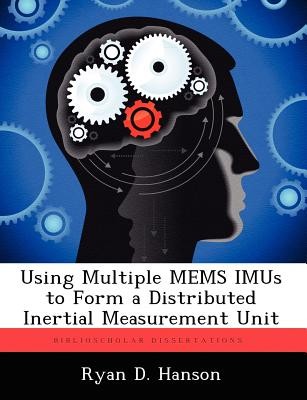
- We will send in 10–14 business days.
- Author: Ryan D Hanson
- Publisher: BiblioScholar
- ISBN-10: 1249594693
- ISBN-13: 9781249594697
- Format: 18.9 x 24.6 x 0.6 cm, minkšti viršeliai
- Language: English
- SAVE -10% with code: EXTRA
Using Multiple MEMS IMUs to Form a Distributed Inertial Measurement Unit (e-book) (used book) | bookbook.eu
Reviews
Description
MEMS IMUs are readily available in quantity and have extraordinary advantages over conventional IMUs in size, weight, cost, and power consumption. However, the poor performance of MEMS IMUs limits their use in more demanding military applications. It is desired to use multiple distributed MEMS IMUs to simulate the performance of a single, more costly IMU, using the theory behind Gyro-Free IMUs. A Gyro-Free IMU (GF-IMU) uses a configuration of accelerometers only to measure the three accelerations and three angular rotations of a rigid body in 3-D space. Theoretically, almost any configuration of six distributed accelerometers yields sufficient measurements to solve for the translational and angular acceleration. In reality, however, sensor noise corrupts the measurements and good sensor geometry is necessary to obtain an accurate estimate of the translational and angular accelerations. Determining the optimal configuration of accelerometers is an exercise in geometry. This thesis investigates the optimal geometry of an INS constructed of multiple networked IMUs and develops the accompanying mechanization and error equations. Simple simulations are run to test and validate the basic design principles.
EXTRA 10 % discount with code: EXTRA
The promotion ends in 23d.19:13:33
The discount code is valid when purchasing from 10 €. Discounts do not stack.
- Author: Ryan D Hanson
- Publisher: BiblioScholar
- ISBN-10: 1249594693
- ISBN-13: 9781249594697
- Format: 18.9 x 24.6 x 0.6 cm, minkšti viršeliai
- Language: English English
MEMS IMUs are readily available in quantity and have extraordinary advantages over conventional IMUs in size, weight, cost, and power consumption. However, the poor performance of MEMS IMUs limits their use in more demanding military applications. It is desired to use multiple distributed MEMS IMUs to simulate the performance of a single, more costly IMU, using the theory behind Gyro-Free IMUs. A Gyro-Free IMU (GF-IMU) uses a configuration of accelerometers only to measure the three accelerations and three angular rotations of a rigid body in 3-D space. Theoretically, almost any configuration of six distributed accelerometers yields sufficient measurements to solve for the translational and angular acceleration. In reality, however, sensor noise corrupts the measurements and good sensor geometry is necessary to obtain an accurate estimate of the translational and angular accelerations. Determining the optimal configuration of accelerometers is an exercise in geometry. This thesis investigates the optimal geometry of an INS constructed of multiple networked IMUs and develops the accompanying mechanization and error equations. Simple simulations are run to test and validate the basic design principles.


Reviews